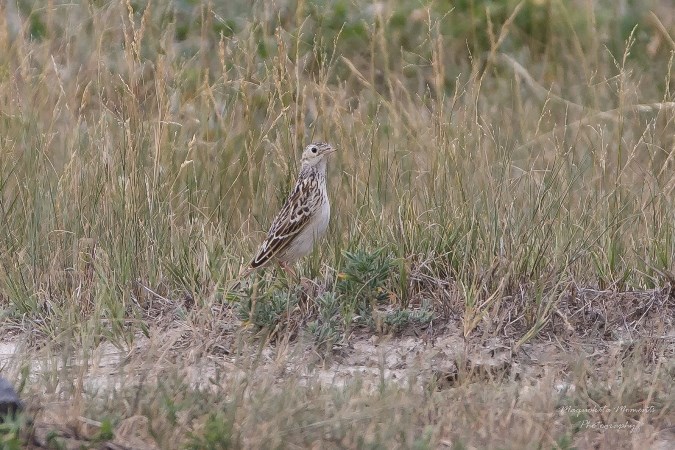Sprague’s pipits are back and on the lookout for theirjust right native mixed-grass prairie habitat.
The middle of May is when the Sprague’s pipits arrive in Saskatchewan after their long migration from wintering grounds in Texas and northern Mexico.
This threatened species faces numerous threats ranging from habitat loss and fragmentation, invasion of exotic species and woody vegetation, as well as haying during their breeding season.
Pipits are most commonly found on blocks of native prairie larger than 160 acres. They require vegetation that is not too tall and dense nor too short and sparse, with some litter. Examples of preferred sites include lightly to moderately grazed, or periodically burned fields.
“It is by knowing how particular they are with their breeding grounds that they are a very important identifier of ecosystem health and habitat change,” says Rebecca Magnus, Habitat Stewardship co-ordinator at Nature Saskatchewan.
Once pipits find their preferred nesting area, they begin to weave dry grasses together in a cup shape on the ground and hide their nest by forming a dome of long grasses over top. The females then lay eggs between mid-May to mid-July, incubating three to six eggs for 10 to 12 days. The young then leave the nest 10 to14 days after hatching. By mid-October all will have left for their winter destination in the warmer south.
Pipits are secretive songbirds and are rarely seen out in the open, often only identified by their song; a sweet, thin jingling series of notes that descends in pitch: “shing-a-ring-a-ring-a-ring-a.”
“Pipits can sing as high as 100 metres in the sky for up to three hours at a time,” says Magnus.
If you are a lucky Saskatchewanian and get not only to hear their song but to witness them on the landscape you will be able to identify them by the following features: they are small (15-17 centimetres) with brown and white streaked plumage; their breast is composed of a necklace of short streaks while their belly and flanks are unmarked; their head is characterized by a thin bill and relatively large brown eyes; and they have contrasting tail feathers with outer white and inner brown ones, which are best seen during flight.
Nature Saskatchewan would appreciate it if you see a Sprague’s pipit or own land that contains their ideal mixed-grass prairie habitat that you please call the toll free HOOT line at 1-800-667-HOOT (4668). By reporting sightings to Nature Saskatchewan’s Stewards of Saskatchewan banner program you are helping to monitor the population and providing valuable information for the conservation of species at risk in our province. Personal information is never shared without permission.



